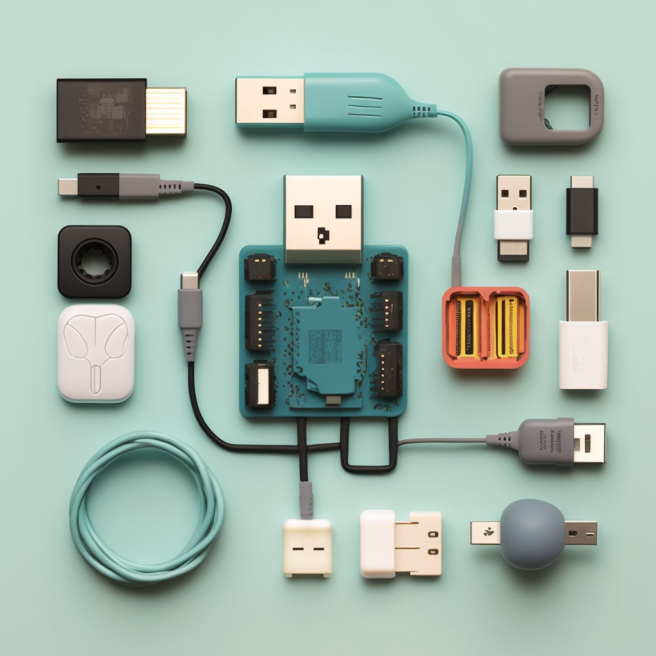What is USB-PD?
USB-PD, or USB Power Delivery, is a specification for a high-power USB charging system that allows for faster charging of devices such as smartphones, laptops, and tablets. It is designed to provide a scalable, flexible, and efficient way to deliver power over USB cables, enabling users to charge their devices more quickly and easily.

One of the main advantages of USB-PD is its ability to deliver higher power levels than standard USB charging systems. While standard USB chargers are limited to a maximum of 2.5 watts, USB-PD chargers can deliver up to 100 watts of power, allowing for much faster charging of devices that require more power.
USB Power Delivery (USB-PD) is a specification for handling high-power charging and data transfer over USB. It allows devices to negotiate a power contract to determine the maximum power and voltage level that can be provided over the USB connection. This allows devices to charge quickly and efficiently while minimizing the risk of damage to the device or the USB port.
In addition to its high power output, USB-PD also offers a number of other benefits. It allows for dynamic power negotiation between devices and chargers, meaning that the charger can automatically adjust its power output to match the needs of the device being charged. This helps to ensure that devices are charged safely and efficiently.
USB-PD is also designed to be highly interoperable, meaning that it is compatible with a wide range of devices from different manufacturers. This makes it an attractive charging solution for businesses and other organizations that need to support a variety of devices.
One of the key features of USB-PD is its use of Type-C connectors, which are designed to be reversible and can be plugged in either direction. This makes it easier for users to connect their devices to chargers, and helps to reduce the risk of damage to connectors and cables. As long as the USB-PD devices are connected, the Power Delivery standard will figure out the correct power settings and appropriate failure mode mitigations.
Source vs Sink
In the context of the USB Power Delivery (USB-PD) specification, a “source” is a device that is capable of providing power to another device over a USB connection. A “sink” is a device that is capable of receiving power from a source over a USB connection.
The USB-PD specification allows devices to negotiate a power contract to determine the maximum power and voltage level that can be provided or received over the USB connection. This is done using a set of defined messages and protocols that allow the source and sink to communicate and agree on the power transfer parameters.
For example, a laptop could act as a source and provide power to a phone that is acting as a sink. In this case, the laptop would be able to charge the phone’s battery using the USB connection. On the other hand, if the phone was acting as a source and the laptop was acting as a sink, the phone could charge the laptop’s battery using the USB connection.

Safety
The USB Power Delivery (USB-PD) specification includes a number of safety features to protect devices and users from potential risks associated with high-power charging and data transfer over USB. Some of the key safety features of the USB-PD standard include:
- Over-voltage protection: This prevents the voltage supplied by the source from exceeding a safe level, which could potentially damage the sink device.
- Over-current protection: This prevents the current supplied by the source from exceeding a safe level, which could potentially damage the sink device or the USB port.
- Over-temperature protection: This prevents the temperature of the sink device from exceeding a safe level, which could potentially cause damage to the device or pose a safety hazard.
- Short-circuit protection: This prevents a short circuit from occurring in the sink device, which could potentially cause damage to the device or pose a safety hazard.
- Reverse current protection: This prevents current from flowing in the opposite direction (i.e., from the sink device back to the source device), which could potentially cause damage to the devices or the USB port.
- ESD protection: This protects against electrostatic discharge, which could potentially cause damage to the devices or the USB port.
Overall, USB-PD is a powerful and flexible charging solution that offers a number of benefits over standard USB charging systems. Its high power output, dynamic power negotiation, and interoperability make it an attractive option for businesses and individuals looking to charge their devices more efficiently and quickly.
More Resources
To find more information about the USB-PD standard, you can check out the following resources:
- The USB Implementers Forum (USB-IF) website (https://www.usb.org/) is the official organization responsible for developing and promoting the USB standard. The website includes information about the different versions of the USB-PD specification and the certification process for USB-PD products.
- The USB-PD specification is available for purchase from the USB-IF website. This document includes detailed information about the technical requirements for implementing the USB-PD standard.
- There are also a number of online resources and articles created by IC manufacturers, which provide practical information about USB-PD, including how it works, its application, and its implementation:
a) Infineon provides excellent and easy to understand reference materials. Their EZ-PD series of chips is surprisingly simple to implement. https://www.infineon.com/cms/en/product/universal-serial-bus-usb-power-delivery-controller/usb-c-and-power-delivery/
b) TI’s Technical Reference Section and Solutions — https://www.ti.com/interface/usb/type-c-and-power-delivery/overview.html
c) Simplest solution to negotiate 20V from USB-PD power supplies is the IP 2721 https://datasheet.lcsc.com/lcsc/2006111335_INJOINIC-IP2721_C603176.pdf
d) ST’s USB Type-C and Power Delivery Controllers https://www.st.com/en/interfaces-and-transceivers/usb-type-c-and-power-delivery-controllers.html#overview